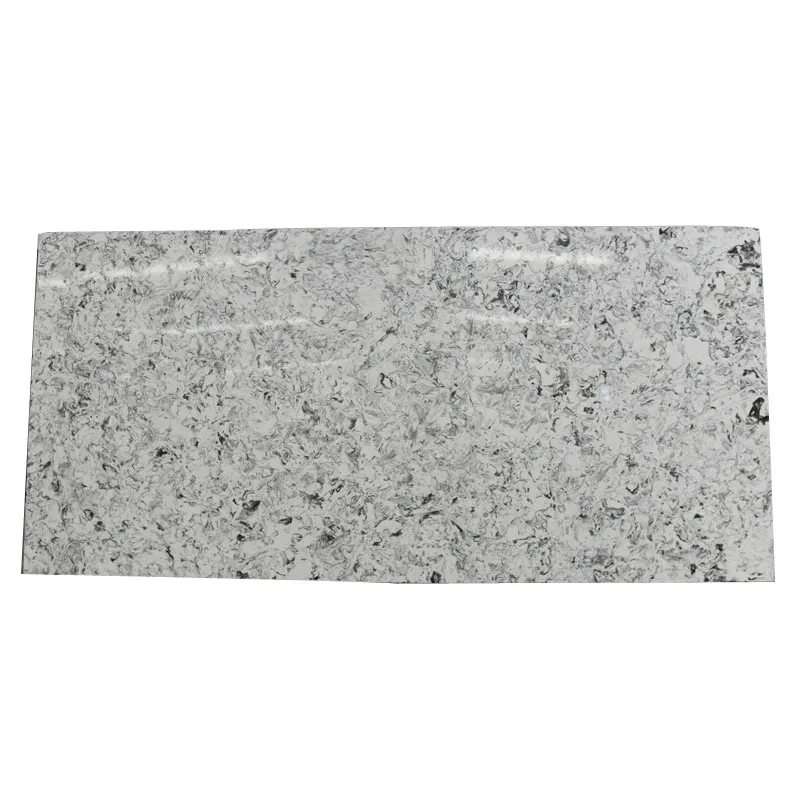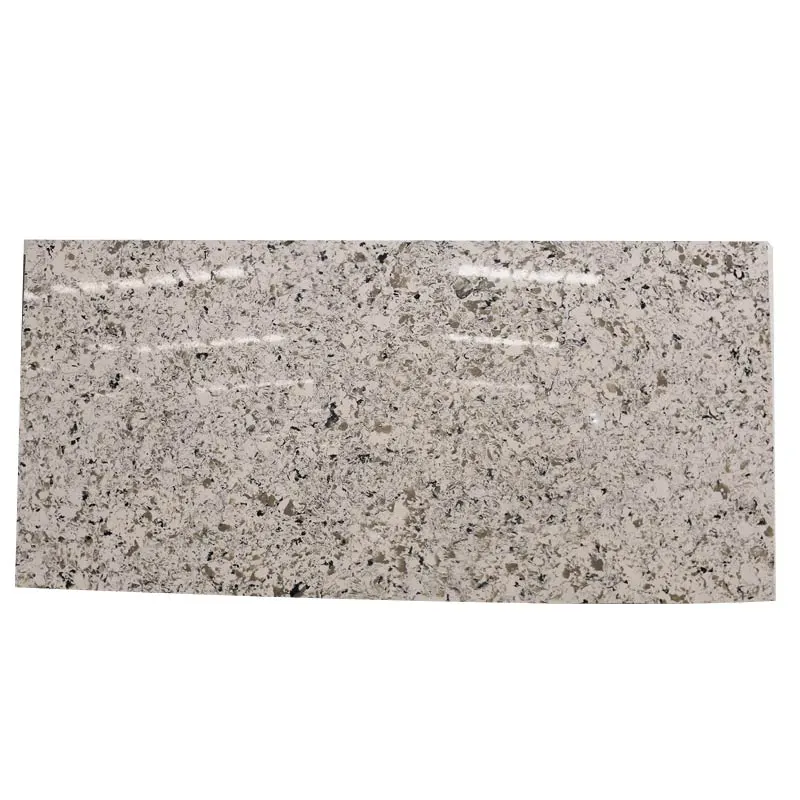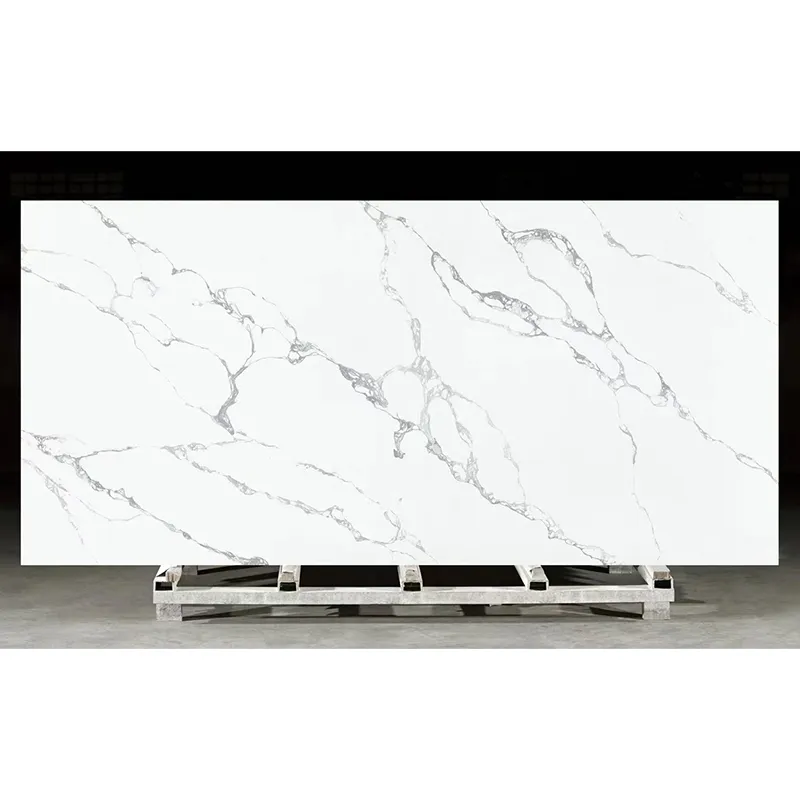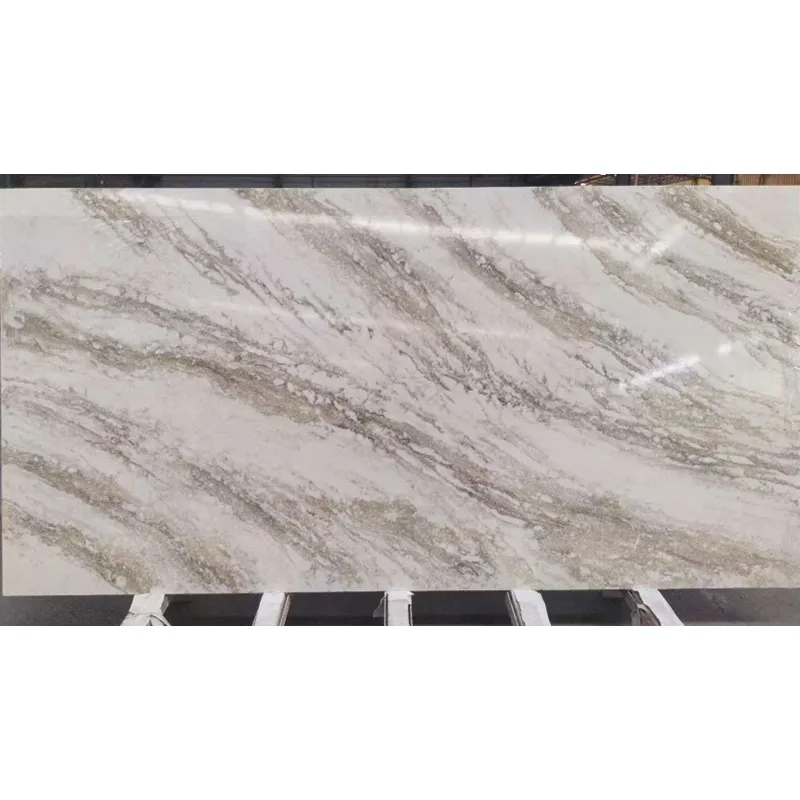In modern home design, the choice of countertop materials not only directly affects the aesthetics of the space, but also determines the durability and practicality of use. As two popular countertop materials, natural marble and quartz stone have won wide market recognition with their unique charm and functional characteristics. However, these two materials have completely different physical properties and visual effects. How to effectively distinguish natural marble countertops from quartz stone countertops has become a key issue that many consumers and designers must consider when choosing.
This article will discuss in depth how to distinguish natural marble countertops from quartz stone countertops from multiple aspects such as material composition, appearance characteristics, physical properties, and maintenance requirements to help consumers make more informed choices.

Marble countertop vs. quartz stone countertop: Differences in material composition
To correctly distinguish natural marble from quartz stone, you first need to understand their composition and ingredients.
Composition of natural marble
Natural marble is a metamorphic rock composed of calcium carbonate minerals (mainly calcite and dolomite). It is formed deep in the earth's crust and is formed by metamorphism of limestone or dolomite under high temperature and high pressure. Due to its natural composition and mineral structure, marble usually has unique textures and color changes, which are the product of geological movement.
● Texture: The texture of natural marble countertops cannot be replicated. Each piece of marble has unique lines and colors, which shows the natural beauty.
● Structure: The crystal structure of marble is relatively loose, with moderate hardness, but it is brittle, easily corroded by acidic substances, and has certain pores.
Composition of quartz stone
Quartz stone countertop is a man-made stone, usually composed of more than 90% natural quartz (silica) and a small amount of artificial additives such as resin and pigment. By pressing these components under high temperature and high pressure conditions, quartz stone countertops not only have extremely high hardness and durability, but also have a high degree of aesthetics.
● Texture: The texture of quartz stone countertops is artificially designed to imitate the appearance of natural stone, and the lines and colors are more evenly distributed.
● Structure: Due to artificial pressing, there are almost no pores inside the quartz stone, the structure is tight, the hardness is high, and it is resistant to acid and alkali.
In summary, natural marble countertops and quartz stone are obviously different in composition. The former comes from nature and has unique textures and natural flaws, while the latter is a mixture of natural quartz and artificial materials, and its appearance and performance are relatively more controllable.

Marble countertop vs. quartz stone countertop: Appearance characteristics
The appearance of the countertop is one of the first factors that consumers pay attention to when choosing. Although both natural marble and quartz stone countertops can show beautiful textures and colors in appearance, their differences in details allow us to distinguish them by observing the appearance.
Natural texture and color difference of marble
The beauty of natural marble countertops comes from its unrepeatable texture and color changes. Since the formation process of marble is the result of natural action, each marble slab has unique patterns and color differences, which is also the charm of natural stone.
● Irregular texture: The texture of marble countertops is often irregular, some of which are wavy, and some are similar to cracks. This natural texture and ever-changing color combination form its unique aesthetic effect.
● Color difference exists: Due to the uneven distribution of minerals, marble may have color difference, which makes different batches of marble may vary in color.
Quartz stone uniform texture and color
Compared with natural marble, quartz stone countertop is a man-made material, so the design of appearance is more controllable and uniform. Manufacturers can design textures that imitate natural marble according to customer needs, and even create unique colors and patterns that do not exist in nature.
● Uniform texture: The texture and color of quartz stone countertop are evenly distributed, with almost no obvious color difference. Whether it is pattern or color, quartz stone can maintain consistency on large countertops.
● Customized color: Quartz stone can achieve a variety of color options by adding different pigments, and has high design flexibility.
By observing the regularity of the texture and the uniformity of the color, it is usually possible to accurately judge whether it is a natural marble countertop or quartz stone.

Marble countertop vs. quartz stone countertop: physical properties
In daily use, the physical properties of the countertop directly affect its durability and maintenance costs. Natural marble and quartz have significant differences in hardness, stain resistance, acid and alkali resistance, etc., which is also an important basis for distinguishing them.
Physical properties of marble
As a metamorphic rock, natural marble countertop has moderate hardness, but it does not have extremely high durability.
● Low hardness: The Mohs hardness of marble countertop is 3-4, which is lower than that of quartz, and it is easy to be scratched. In daily use, especially on kitchen countertops, if you don't pay attention to using knives and other sharp tools, it is easy to leave scratches on the marble surface.
● Poor stain resistance: There are tiny pores on the surface of marble, and liquids (such as coffee, red wine, oil, etc.) can easily penetrate these pores, forming stains. Although it can be improved by sealing treatment, marble is still inherently easy to stain.
● Poor acid and alkali resistance: Since marble countertop is mainly composed of calcium carbonate, it is easy to react chemically when it encounters acidic substances (such as lemon juice, vinegar, etc.), causing the surface to lose gloss or even corrode.
Physical properties of quartz
As a man-made material, quartz is engineered for its hardness and durability, and is extremely wear-resistant and stain-resistant.
● High hardness: The Mohs hardness of quartz stone countertops is 7, much higher than marble. This means that quartz stone countertops are not easily scratched in daily use and can keep their surfaces intact for a long time.
● Strong stain resistance: Quartz has a dense internal structure and no pores, making it difficult for liquids to penetrate, so it has excellent stain resistance. Even accidentally spilled liquids are easy to clean and not easy to leave stains.
● Good acid and alkali resistance: Quartz has excellent acid and alkali resistance, and common kitchen chemicals will not cause any damage to its surface. This makes quartz more durable in environments such as kitchens.
From the perspective of hardness and durability, quartz stone countertops obviously perform better in daily use, especially for countertops that need to be cleaned and used frequently.

Marble countertops vs. quartz stone countertops: Maintenance requirements
For many consumers, the cost and difficulty of maintaining a countertop is an important consideration when choosing a material. Natural marble countertops and quartz stone have significantly different maintenance requirements for daily use.
Marble maintenance requirements
Due to marble's porous structure and low acid and alkali resistance, maintaining a marble countertop requires more effort and time.
● Regular sealing: In order to prevent liquid from penetrating the pores of marble, regular sealing is usually required. This process is not only time-consuming, but also requires professional operation, which increases maintenance costs.
● Careful cleaning: Marble surfaces are sensitive to acidic substances, so you need to avoid using detergents containing acidic ingredients when cleaning, otherwise it may damage its surface. At the same time, any spilled liquids should be wiped off immediately during daily cleaning to avoid stains from being retained for a long time.
● Polishing and polishing: As marble countertops are used for a long time, the surface gloss may gradually decrease, and regular polishing and polishing are required to restore their original brightness.
Quartz stone maintenance requirements
In contrast, the maintenance requirements of quartz stone countertops are much simpler, almost "zero maintenance".
● No sealing treatment required: Due to the dense structure of quartz stone, liquids cannot penetrate the surface, so it does not need regular sealing treatment like marble countertops.
● Easy to clean: Quartz stone has a smooth surface and strong stain resistance. Daily cleaning only requires warm water and neutral detergent. No special treatment is required, and there is no need to worry about acidic substances damaging the surface.
● High durability: The wear resistance and durability of quartz stone countertops make it less susceptible to damage during long-term use, and there is no need for frequent grinding or polishing.
It can be seen that quartz stone countertops are more worry-free in terms of maintenance, while marble requires more daily maintenance and special treatment.
Marble countertop vs. quartz stone countertop: price and usage scenarios
Although price is not the decisive factor in distinguishing natural marble countertops from quartz stone countertops, the performance and maintenance requirements of different materials will also affect their prices and usage scenarios.
● Natural marble countertops are usually more expensive due to their unique texture and natural beauty, and are suitable for areas that need to display high-end decorative effects, such as countertops or decorative walls in living rooms and dining rooms.
● Quartz stone is more suitable for areas that are frequently used and cleaned, such as kitchens and bathrooms, due to its higher hardness and durability. The price is relatively stable and economical.

